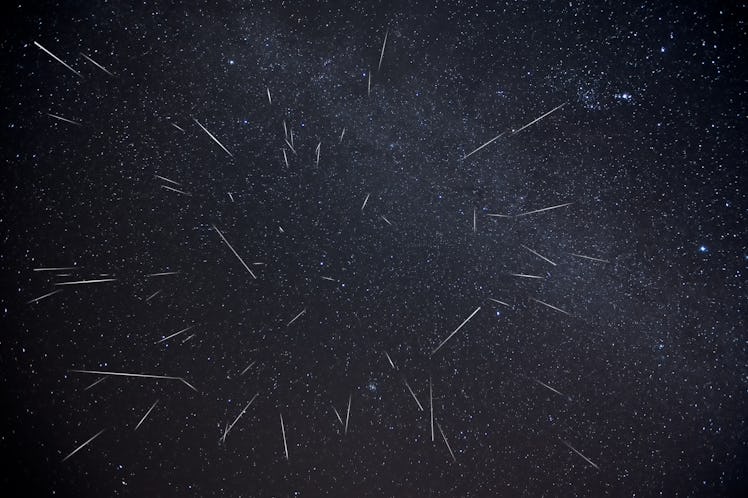How To Watch The Orionid Meteor Shower's Dazzling Peak
Mark your calendars — the Orionid Meteor Shower’s peak is imminent. Here's how to watch with the kids.

Mark your calendars — the Orionid meteor shower is days away from peaking, and it will be a perfect event to watch with your kids, perhaps snuggled up under the stars. This meteor shower, dazzling as it is, comes courtesy of flying particulates of Halley’s Comet.
Here’s everything you need to know about the Orionids, including what the meteor shower is about, when the shower will peak, and how to best enjoy it with the kids.
What are the Orionid meteors?
The Orionid meteors are unique because of their origin: They’re actually shooting rocks that have come off the fabulous Halley’s Comet. One of the most famous comets, Halley’s comet goes around the sun every 76 years. As it zips by, the bits and pieces that fly off the comet are what we see shooting through our sky in the fall when the Orionids come out to play.
According to EarthSky, the last time we saw Halley’s Comet was 1986, and it’s not set to return until 2061, making it basically a once-in-a-lifetime event. However, even though it’s 39 years before we’ll see the comet, the Orionids are an annual event.
While the Orionid meteor shower isn’t the most popular meteor shower of the year, it’s one of the good ones to watch with the kids. We know it comes around the same time each year, and it’s an active shower, so kids will probably see several meteors while out watching.
On an average year, the Orionid meteor shower can produce 10 to 20 shooting stars an hour. But it has been active enough to reveal 50 to 75 meteors per hour if you’re lucky, which is on par with the most popular meteor shower, the Perseids.
When will the Orionid meteor peak?
The Orionid meteor shower is long-running, technically active between September 26 and November 22.
But the shower will peak on October 20th and 21st. So if you’re planning to watch with the kids, the peak falls on a Thursday and Friday night... making that Friday night perfect viewing if you’re willing to indulge the kids past bedtime.
How can I watch the Orionid meteor shower?
After deciding whether Thursday or Friday night is the best for you and the kids to settle in and look for meteors, narrowing down the best time and conditions to watch is the next step.
According to TimeandDate, the time the meteor will be best visible will depend on where you live. The best time to view the Orionids will be after the sun goes down. So in order to catch the meteors, you’ll likely have to resign yourself to keeping your kids up past their bedtime, depending on their age.
This meteor shower can be viewed without a telescope, so all you need is an open space away from lights or other objects in the skyline. Having a blanket, snacks, and perhaps a thermos of hot cocoa to keep everyone stay awake will also help.
Watching the shower will likely be easiest lying on the grass and looking at the sky. The meteors won’t always be seen in the same area, so your kids’ heads may look all over the place.
Make sure you and the kids are dressed for the weather, because October weather can be unpredictable. You should plan to stay and watch for at least an hour if you’re determined to see at least a few meteors.
The next meteor shower we can start planning on seeing with our kids is the Southern Taurids, which will peak in November.
This article was originally published on